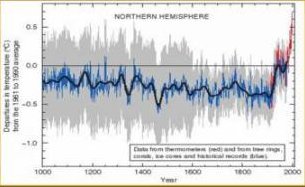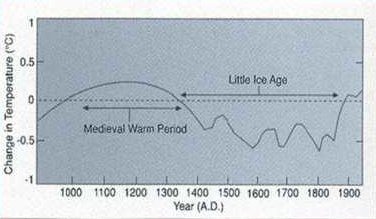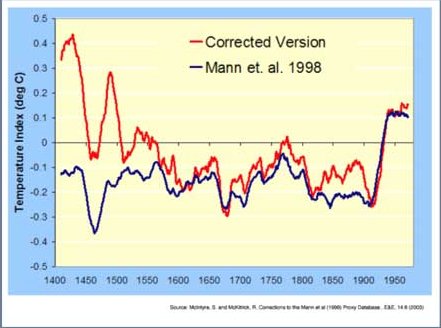Contact Details :
Craig Culley, Secretary
World Ostrich Association
33 Eden Grange
Little Corby
Carlisle, UK CA4 8QW
Tel +44 1228 562 923
Fax +44 1228 562 187
Email:
|
 |

World Ostrich Association Newsletter No. 81
December 2009
Included in this edition:
1. FAO Agrees Stronger World Food Security Governance
2. GM Feed Does Not Make GM Chicken
3. Calls for Livestock Production Cuts
4. Climate Gate
1. FAO Agrees Stronger World Food Security Governance
Last week it was reported that the FAO’s top governing body has cleared the way for setting up stronger and more effective security governance. http://www.fao.org/news/story/en/item/37643/icode/
2. GM Feed Does Not Make GM Chicken
The concerns on whether livestock feed includes (GM) ingredients continues to cause challenges for livestock producers as non GM Maize and Soya are increasingly difficult to guarantee and, as discussed in last month’s newsletter, placing European livestock producers at competitive disadvantage.
Allegations of false advertising emerged during January 2008 to June 2009 over a New Zealand poultry companies advertising and labelling claims regarding GM. The discussion is interesting. The company claimed their chickens were GM-free even though their rations contained 13% soybean that was GM.
The discussion related to the definition of GM-Free. In New Zealand, food that has been modified, as in the DNA or the protein present in the final food (animal), or if the food has 'altered characteristics as a result of the GM process' has to be labelled GM. In the case under discussion (and with most livestock), the chicken’s had not been modified only 13% of the feed they consumed. Professor Heinemann of the University of Canterbury was asked by the commerce commission whether chickens that have eaten GM feed could contain GM ingredients in their meat.
Professor Heinemann’s response:
“The cumulative strength of the positive detection reviewed leaves me in no reasonable uncertainty that GM plant material can transfer to animals exposed to GM feed in their diets or environment, and that there can be residual difference in animals or animal-products as a result of exposure to GM feed." |
| |
Professor Heinemann’s report entitled “Report on animals exposed to GM ingredients in animal feed” can be downloaded in pdf format at the Commerce Commissions Web site.
The following is an email response by AgSearch scientist Jimmy Suttie made to the National Business Review of New Zealand,
“Professor Heinemann's use of English, as reported, is confusing. He says (effectively) there is a chance that the plant DNA may be transferred to animals and that this transfer could lead to residual differences.
“But in response, while it is undeniable that plant DNA is ingested by animals when they eat a feed, it is by no means certain that that DNA will be incorporated into the animal’s genome rather than being fully digested. For example, every time you eat a fresh tomato or lettuce, you consume plant DNA. This is digested by our bodies.”
Dr Suttie said just as consumed tomato DNA does not become a part of your DNA, chicken feed does not become part of a bird’s DNA.
“Even if any DNA were to be incorporated into the eater’s genes, this would be as single constituents of DNA (nucleotides) rather than a piece of gene sequence."These constituents carry no genetic information, in themselves. In addition as the genetic code is conserved, then whether this DNA was from a GM or a non GM source is immaterial: the DNA itself is identical. "Any residual effect of that DNA being incorporated into the genome is very unlikely, and the source of the DNA, GM or non GM would not influence the chance of such incorporation.
“In the vanishing small chance that a residual effect of any DNA was found, the question of the relevance of that, in terms of food safety, is left hanging by Professor Heinemann. Even the professor uses the term 'can be' rather than a more definitive verb.”
Dr Suttie said GM corn, soy and canola have been grown worldwide since 1996, and the products have been consumed safely by animals and humans alike. |
| |
The full article can be viewed on the NBR web site.
The conclusion indicates that there can be some residual GM material in the meat, which modern consumers currently prefer to avoid, but the animal eating GM feed is not GM modified. Another article on this item – Poultry Company Falls Fowl on GM-Free Claim.
3. Report Calls for Livestock Cuts
The medical journal The Lancet, has called for a 30 per cent cut in livestock production to reduce green house gas emissions and meet UK emission targets for 2030. A report on this can be viewed at the Pig Site.com. As one can imagine the report has been strongly criticised by the farming community. This is the Chairman of the National Farmers Union’s response.
Mr Kendall said: "Farmers will be angry that, yet again, we have an ill-informed and simplistic report which appears to completely misunderstand agriculture's emissions and its role in climate change. But the most unbelievable thing is that this report appears to have been put together without any input from the one Government department that deals in food policy and understands the issues – Defra.
"We know this is a complex issue and that is why Defra has been looking at it. This report advocates a 30 per cent reduction in livestock numbers in countries that have the most efficient production systems and hence the lowest emissions. It is part-funded by the Department of Health and endorsed by three ministers with no thought for the unintended consequences of such a policy.
"What we need to do is look at doing things more efficiently rather than simply cutting livestock numbers. The car industry is praised for producing more efficient and environmentally friendly vehicles rather than being told to cut production. Likewise, a substantial investment in agricultural research and development is needed to enable farmers to produce food more efficiently with less impact on the environment.
"Other governments that value their livestock production are looking at exciting and innovative ways to reduce agriculture's environmental impacts while understanding the need to produce more food for an expanding global population. If the UK government wants to be seen as a leader at the climate change talks in Copenhagen, they will need to work with farmers and not alienate them with soundbites." |
| |
Barry Groves has asked the question "Is the claim about Methane" valid? His conclusion to the 4 part article:
So, now we know that like CO2, methane is not a major threat to either the planet or to the life on it. And as cattle and other livestock fertilise and improve the health and quality of the soil on which we all depend for the food that sustains us, perhaps we should think about eating more meat rather than less.
And while we are doing that, as there is no point in wasting what is a very useful source of cheap energy, we could collect methane from cowsheds and from waste dumps. That way, small local methane power plants could easily supply local power needs, and the very heavy cost of power stations could be reduced. |
| |
4. Climate Gate
The University of East Anglia confirmed that a data breach this month has put a large quantity of emails and other documents from staff at its Climate Research Unit (CRU) online. CRU is one of the three leading climate research centers in the UK, and a globally acknowledged authority on temperature reconstructions. . It is clear from those who have viewed these emails, if genuine, is that the 'scientists' who formulate IPPC (Intergovernmental Panel on Climate Change) and other policies know that their 'Man-made climate change' dogma is a scam.
Quote from Fox News – 24th November
Science depends on good quality of data. It also relies on replication and sharing data. But the last couple of days have uncovered some shocking revelations. Computer hackers have obtained 160 megabytes of e-mails from the Climate Research Unit at the University of East Anglia in England. These e-mails, which have now been confirmed as real, involved many researchers across the globe with ideologically similar advocates around the world. They were brazenly discussing the destruction and hiding of data that did not support global warming claims. The academics here also worked closely with the U.N.'s Intergovernmental Panel on Climate Change. Read More....... |
| |
Figure 1 is from a paper published in the Journal Nature in 1998 and authored by 3 scientists. The graph demonstrates that global temperatures had been reasonably constant for a millennium up to the early twentieth century and then risen rapidly, particularly at the end of the century. This graphic was known as the "hockey stick graph' because of the shape.#1 The importance of this graph is that it was used in a UN report to put forward the claim for global warming. Prior to the UN report published in 2001, the existence of a warm period of about 500 years between c.950 and c.1450AD had not been contested or controversial. Figure 2 is the graphic that had previously been used. The hockey stick graph, produced by Mann et al was replaced by the IPCC to make it appear that there had been a dramatic increase in CO2 and temperature in recent years from manmade factors.
Figure 1 - Hockey Stick
|
Figure 2 - Temperatures for past Millennium
|
| |
|
A number of scientists independently have proven the Hockey Stick graph was inaccurate. Michael Crighton has published an article “Presenting the Case for Skepticism on Global Warming”. Two Canadian investigators, McKitrick and McIntyre, re-did the study using Mann's data and methods, and found dozens of errors, including two data series with exactly the same data for a number of years. Not surprisingly, when they corrected all the errors, they came up with sharply differing results - Figure 3.
Figure 3 - McKitrick and McIntyre's Corrected Climate Graph
|
| |
Climategate, as the theft has become known, is proving that the hockey stick graphic and many other figures have been manipulated and may not be as accurate as all would like to believe.
Below are a sample of the reports of the break in, discussions and some insite into the content of these emails and documents.
The Guardian: Climate skeptics claim leaked emails are evidence of collusion among scientists
BBC: Climate Change – Methodology Questioned
New Scientist: Hacker Breaks into climate change institution
New York Times: Hacked E-Mail is New Fodder for Climate Dispute
Real Climate: The CRU hack
CBC News: Hackers skewed climate-change emails
The UK Telegraph: Climategate: the final nail in the coffin of Anthropogenic Global Warming?
The UK Telegraph: Hacked: Sensitive Documents Lifted from Hadley Climate Centre
The UK Telegraph: This is the worst scientific scandal of our generation
Watts Up With That?: Various Articles and discussions
American Power: Global Warming Hoax Breaks Wide Open as Hackers Target East Anglia Climate Research Unit
Sunday Times: The Great Climate Change Science Scanda
----
#2Michael E. Mann, Raymond S. Bradley and Malcolm K. Hughes. Global-scale temperature patterns and climate forcing over the past six centuries. Nature 1998; 392: 779–787.
|
|



